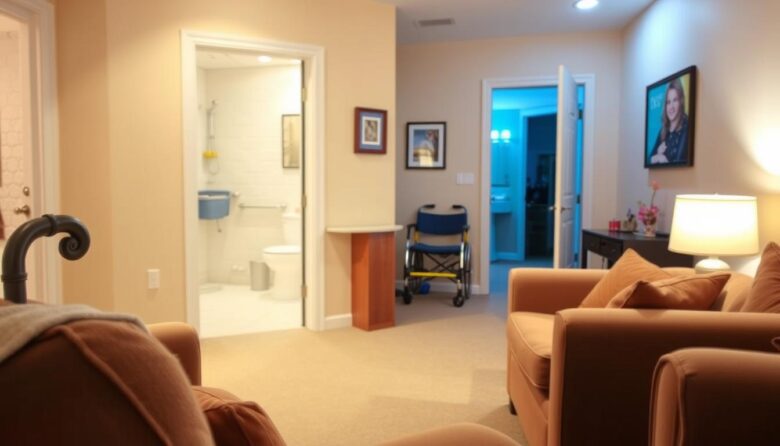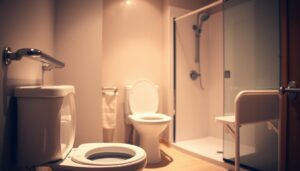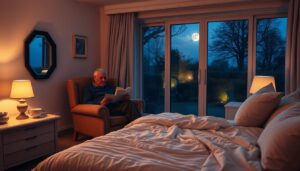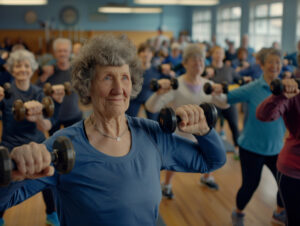Falls are the leading cause of injuries among adults aged 65+, with 20-30% experiencing at least one incident yearly. These accidents often result in fractures, lengthy hospital stays, and reduced independence. Over 85% of injury-related hospitalizations in this age group stem from falls.
Shockingly, 95% of hip fractures among older adults are fall-related, with 20% proving fatal within a year. Nearly half of these dangerous incidents occur where people feel safest—their living spaces. Bathrooms and staircases account for most household accidents.
Age-related changes in vision, balance, and bone density increase vulnerability. Simple modifications like adding grab bars or removing tripping hazards can dramatically reduce risks. Proactive adjustments help maintain autonomy while avoiding costly medical bills.
The financial toll exceeds $2 billion annually in healthcare costs alone. Seniors hospitalized after falls typically stay 10 days longer than those with other injuries. Most concerning? These incidents are largely preventable through strategic planning.
This guide reveals practical, budget-friendly solutions using a room-by-room approach. Discover how minor changes create safer environments without sacrificing comfort or style.
Understanding Fall Risks and Prevention Strategies
Everyday household items often hide dangers that escalate with age. Floor clutter and unstable surfaces account for 52% of indoor accidents. Recognizing these threats is the first step toward creating secure environments.
Identifying Common Tripping Hazards and Rug Issues
Loose rugs cause 55% more slips than other floor coverings. Secure edges with double-sided tape or remove them entirely. Electrical cords stretched across walkways create invisible tripwires—route them along walls instead.
Low furniture like ottomans blends into surroundings, especially in dim lighting. Contrasting tape on edges improves visibility. Thresholds between rooms should never exceed ¼ inch height difference.
Implementing Non-Slip Flooring and Grab Bar Solutions
Bathrooms require immediate attention—wet surfaces increase fall risks by 80%. Use rubber-backed mats with suction cups for stability. Textured shower strips provide grip without full renovations.
Properly installed grab bars support 250-300 pounds when anchored to wall studs. Place them near toilets and showers for balance assistance. Replace glossy tiles with slip-resistant coatings for year-round protection.
Emergency Preparedness for a Secure Home
When seconds count, having reliable emergency systems becomes non-negotiable. Proactive planning bridges critical gaps between crises and timely assistance, particularly for those managing health conditions independently.
Stocking an Emergency Kit and Essential Supplies
Medical alert systems provide instant access to help during health emergencies. Wearable options like pendants or GPS-enabled wristbands detect falls automatically, even if the user can’t press a button. Pair these devices with a well-stocked kit containing three days’ water (one gallon daily), non-perishable meals, and medications.
Include first-aid supplies, flashlights with extra batteries, and waterproof documents. Update kits quarterly to replace expired items. Store them in easily reachable locations near exits or primary living areas.
Planning for Power Outages with Backup Generators
Extended blackouts threaten access to medical equipment and climate control. Portable generators keep oxygen machines and refrigerated medications operational. Choose models with automatic shutoffs to prevent carbon monoxide risks.
Standby units offer whole-house coverage but require professional installation. Always store fuel safely away from living spaces. Test systems monthly and maintain communication plans with family to ensure rapid check-ins during outages.
Enhancing Home Security for Peace of Mind
Modern devices transform living spaces into protected environments while maintaining comfort. Strategic upgrades address both accidental hazards and external threats, creating layers of defense that work seamlessly together.
Auto-Shutoff Features and Intelligent Alarms
Appliances with automatic shutoff capabilities prevent 34% of cooking-related fires. Stovetops that deactivate after inactivity reduce risks from forgotten burners. Programmable ovens add extra protection by limiting operation times.
Smart detectors now send alerts to multiple contacts when smoke or carbon monoxide appears. These systems test batteries monthly and issue replacement reminders. Integration with voice assistants provides audible warnings for hearing-impaired individuals.
Integrated Monitoring and Electrical Safety
Security systems with motion sensors and live video feeds deter break-ins while allowing family check-ins. Biometric door locks eliminate lost-key emergencies and track entry patterns. Cameras with privacy modes disable recording during specified hours.
Surge protectors lose effectiveness as internal components degrade. Replace them every three years to prevent electrical fires. Pair with whole-house suppressors for comprehensive protection against power spikes.
Accessible Home Modifications for Independent Living
Maintaining autonomy while aging often depends on thoughtful design updates. Simple structural changes create environments that adapt to physical needs rather than restricting movement. These improvements empower individuals to navigate spaces confidently while preserving daily routines.
Installing Grab Bars, Lever Handles, and Stairlifts
Grab bars offer critical support beyond bathrooms. Place them vertically near beds for easier sitting/standing and horizontally along hallways for steadying during walks. Choose models with 300+ pound capacity and textured surfaces for grip. Secure bars directly into wall studs using corrosion-resistant screws.
Round doorknobs challenge those with arthritis. Replace them with lever-style handles requiring minimal pressure. Modern designs match traditional or contemporary aesthetics while improving accessibility. Install rocker light switches needing only palm contact instead of precise finger movements.
Stairlifts restore access to upper floors in multi-level houses. Straight-track systems work for unbroken staircases, while custom curved rails navigate landings. Models with swivel seats and folding footrests maintain clear pathways when not in use. Professional installation ensures smooth operation and safety certifications.
Elevate electrical outlets to 24 inches above floors to eliminate bending. Pair with motion-activated lighting in transition areas like entryways. These modifications collectively reduce reliance on external care, often delaying transitions to assisted living facilities by years.
Home Safety for Seniors: Creating a Secure Living Space
Tailored checklists and expert assessments form the foundation of a safe residence. These tools help identify hidden risks while adapting to evolving mobility needs. Regular evaluations ensure living spaces stay protective as circumstances change.
Developing a Customized Home Safety Checklist
Start with a room-by-room evaluation template. Focus on lighting levels, floor surfaces, and emergency pathways. Update criteria quarterly to reflect seasonal changes or health shifts.
Prioritize high-risk zones like bathrooms and staircases. Note furniture arrangements blocking clear walkways. Digital checklists allow easy sharing with family members involved in care.
Leveraging Expert Home Safety Inspections
Certified specialists spot risks untrained eyes miss. Occupational therapists assess daily routines, while contractors verify modification durability. Many inspections qualify for Medicare coverage when ordered by physicians.
Professionals test grab bar stability and outlet heights during assessments. They provide prioritized upgrade lists addressing immediate dangers first. Always request proof of certification before hiring inspectors.
Combining personal checklists with professional reviews creates layered protection. This approach helps loved ones maintain independence while reducing preventable accidents.
Room-By-Room Adaptations to Prevent Falls
Strategic adjustments in high-risk areas significantly reduce accident potential. Focus on spaces where daily activities demand frequent movement and balance.
Optimizing Bathrooms and Kitchens for Fall Prevention
Bathrooms need multiple grab bars near showers and toilets. Install vertical bars 33-36 inches high beside toilets and horizontal ones 34-38 inches above tub floors. Use non-slip adhesive strips in showers and rubber-backed mats outside bathing areas.
Set water heaters to 120°F to prevent scalding. Test temperatures with a thermometer before use. Motion-activated night lights guide nighttime visits without glare.
In kitchens, store daily items between hip and eye level. Install pull-out shelves to avoid reaching. Use step stools with handrails and wide bases. Mark stove controls with bright labels for visibility.
Improving Outdoor Spaces and Staircase Safety
Apply textured paint or rubber treads to outdoor steps. Railings should extend 12 inches beyond stairs on both sides. Solar-powered path lights activate automatically at dusk.
Keep walkways clear of debris. Use calcium chloride instead of salt for ice removal—it works faster in freezing temps. Repair cracks wider than ¼ inch in concrete immediately.
Indoor stairs require 40-60 lux brightness. Install switches at both ends. Contrasting tape on edges improves depth perception. These changes create secure environments across all living areas.
A Safer Home, A Better Tomorrow
Creating a secure living environment empowers older adults to thrive independently. Proactive adjustments, from improved lighting to emergency systems, form layers of protection that preserve autonomy. These changes address immediate risks while supporting long-term well-being.
Small modifications yield substantial impacts. Lever-style handles and non-slip surfaces require minimal effort but dramatically reduce accident potential. Pairing these with reliable medical alert devices creates comprehensive safety nets.
Family members play crucial roles in maintaining safe spaces. Regular assessments by occupational therapists identify evolving needs, ensuring environments adapt as physical abilities change. Collaborative efforts often delay transitions to assisted living facilities.
Investing in preventive measures today builds confidence for tomorrow. Each strategic upgrade contributes to sustained independence and peace of mind. Together, these steps forge pathways to healthier, more fulfilling lifestyles.



